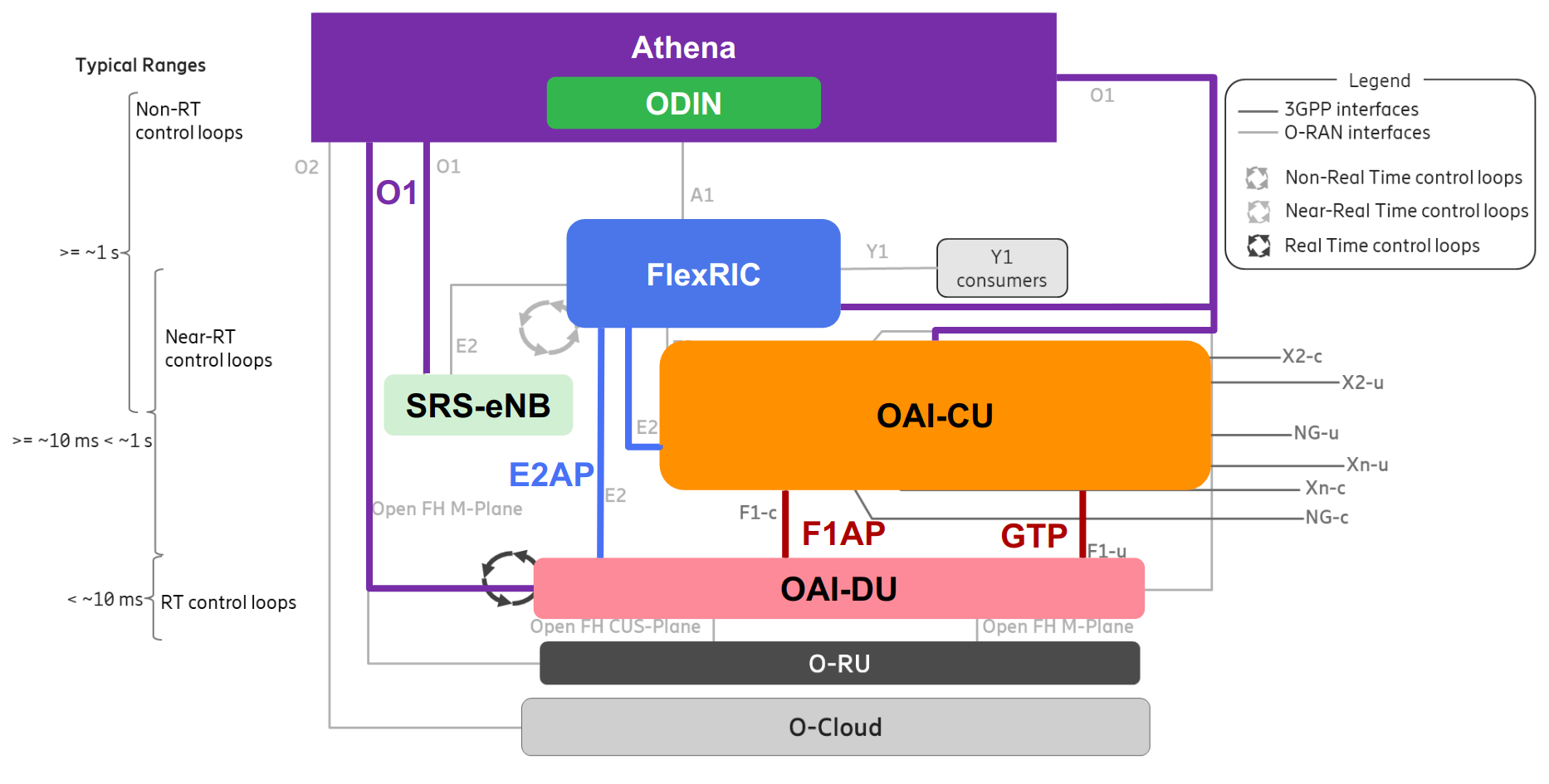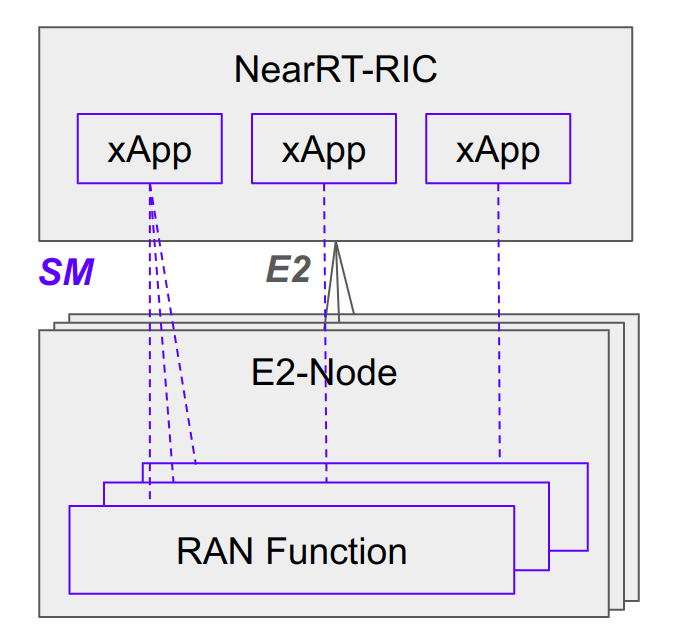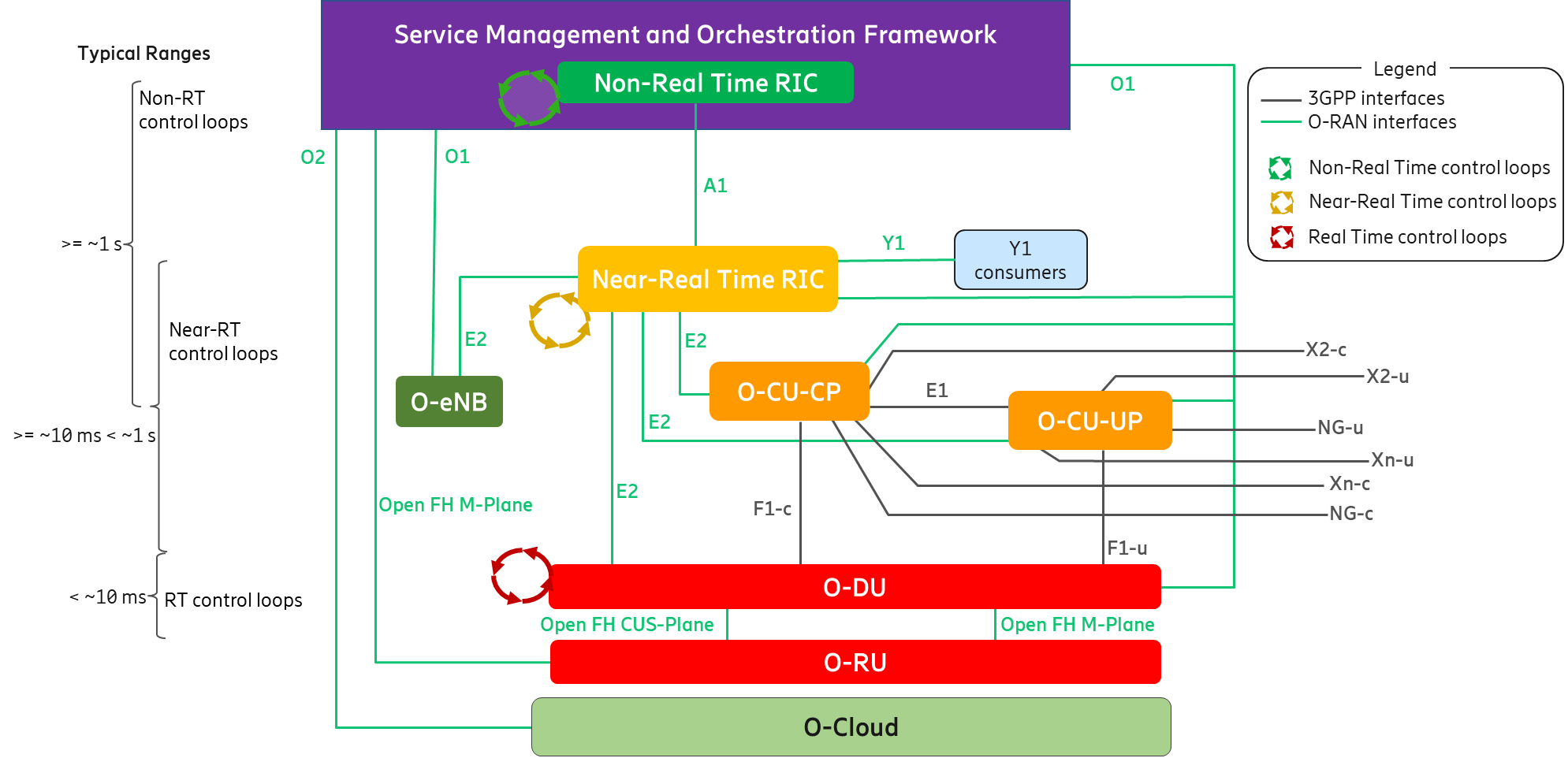O-RAN Stack
In the figure above, there are two type of interface:
- 3GPP interfaces (e.g., F1, E1, X2 and NG) and
- O-RAN interfaces:
- E2 is an interface between Near-Real-Time RIC (NearRT-RIC) and E2-Nodes (e.g., DU, CU-UP, CU-CP and eNB), and it allows NearRT-RIC to control and monitor the selected RAN functions in the E2-Nodes, facilitating dynamic optimization and management. Reference
- Open Fronthaul is an interface between DU and RU with a lower layer functional split 7.2x Reference
- O1 is an interface between SMO and network elements (e.g., NearRT-RIC, DU, CU-UP, etc.), responsible for deploying and configuring the network elements. Reference
- A1 is an interface between NearRT-RIC and Non-Real-Time RIC (NonRT-RIC), enabling the exchange of policy management and enrichment information between NearRT-RIC and NonRT-RIC. Reference
- The other interfaces, such as O2 and Y1 are out of scope for the current version of the ORS.
Lab Architecture

For our lab, the network deployment is as shown in the figure above, which uses FlexRIC as NearRT-RIC, ODIN as NonRT-RIC and Athena as Service Management and Orchestration (SMO). E2-Nodes, including CU and DU provided by OpenAirInterface, will setup E2 connections (SCTP mechanism) with NearRT-RIC.
xApp Principles

- xApp is an application running on top of NearRT-RIC to control and monitor specific RAN functions in connected E2-Nodes via the RIC report and control service. It is independent of NearRT-RIC and can be provided by any third party.
- RAN functions are the internal functions within an E2-Node responsible for managing UEs and Cells (e.g., MAC scheduler, stats of RLC, PDCP and RRC layers)
- Service Model (SM) serves as a framework for storing collected data and control information, and it is used to communicate between xApp and RAN functions.
There are several SMs existing:
- Standardized SMs from O-RAN: Key Performance Measurement (KPM), Radio Control(RC), and Cell Configuration and Control (CCC)
- Customized SMs from FlexRIC: MAC, RLC, PDCP, GTP, Slice Control (SC), and Traffic Control (TC)
